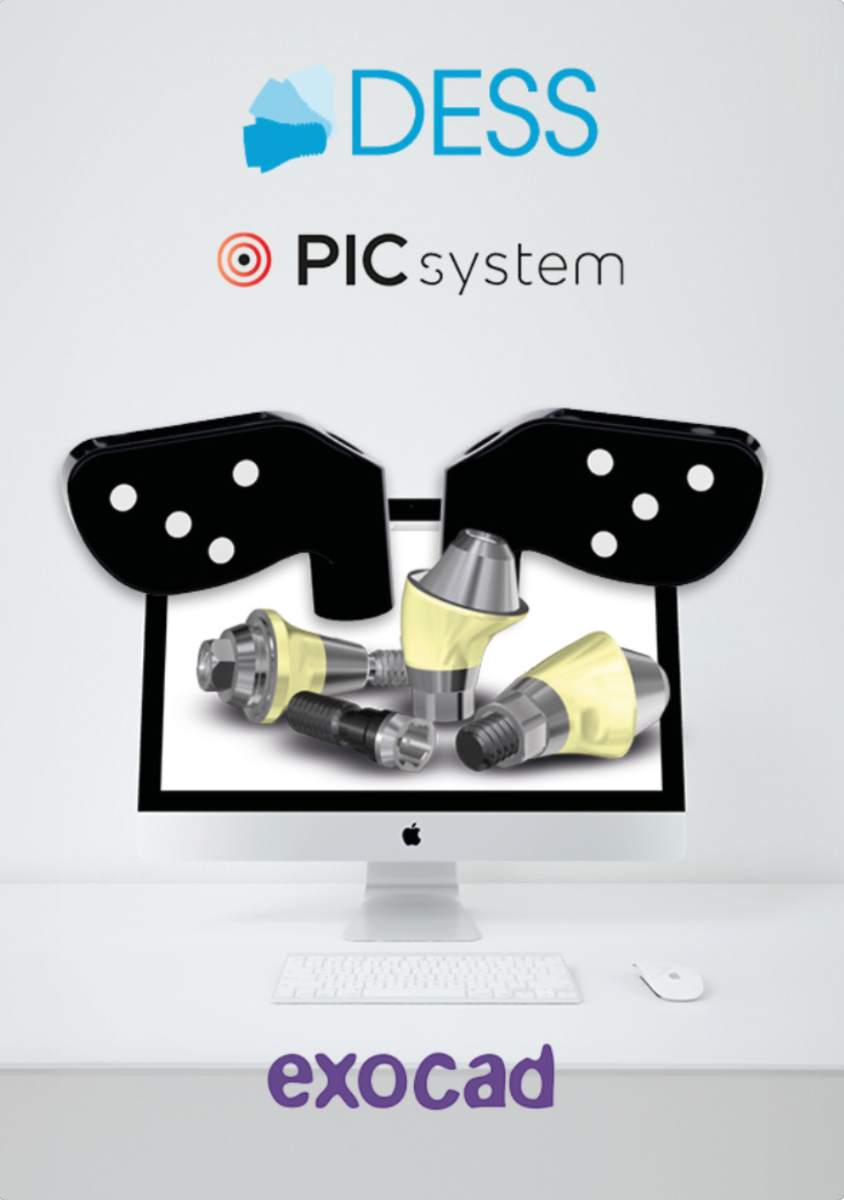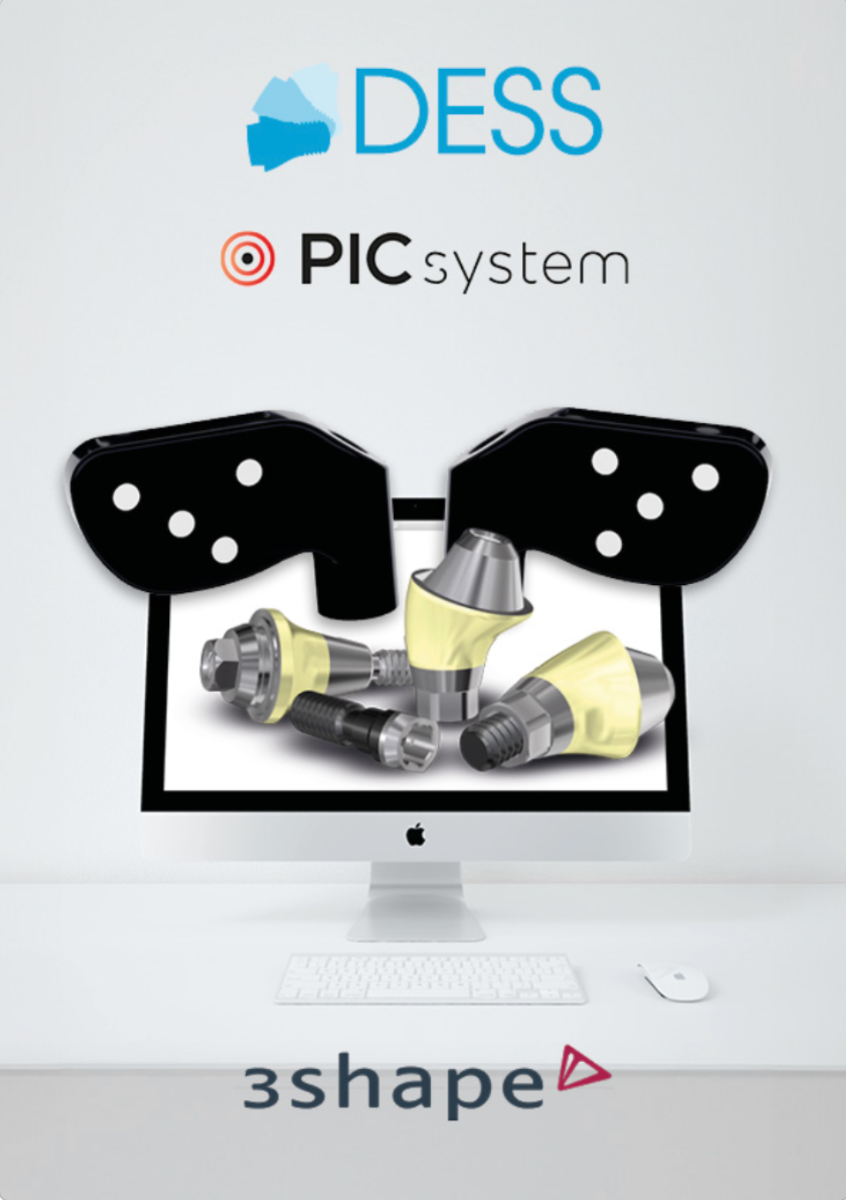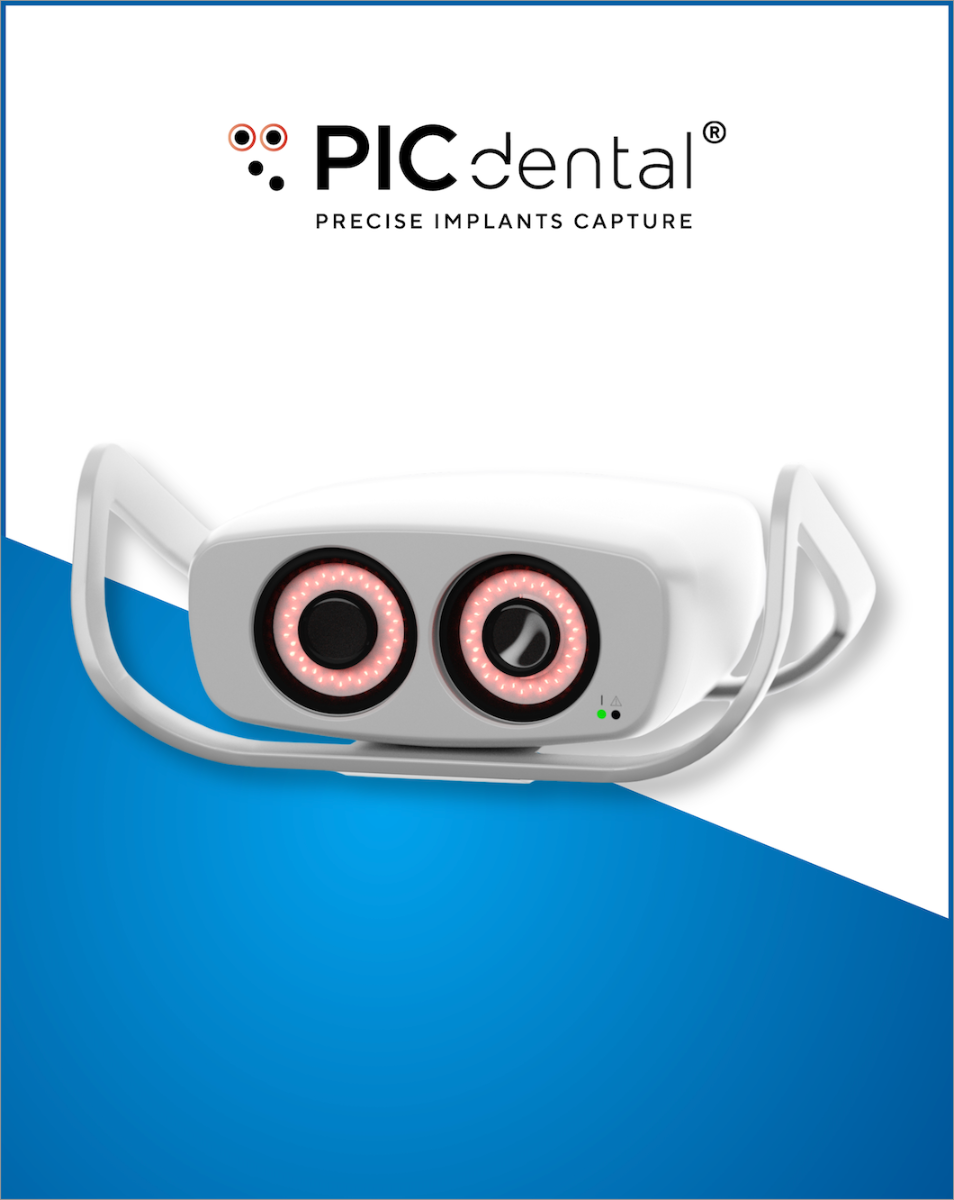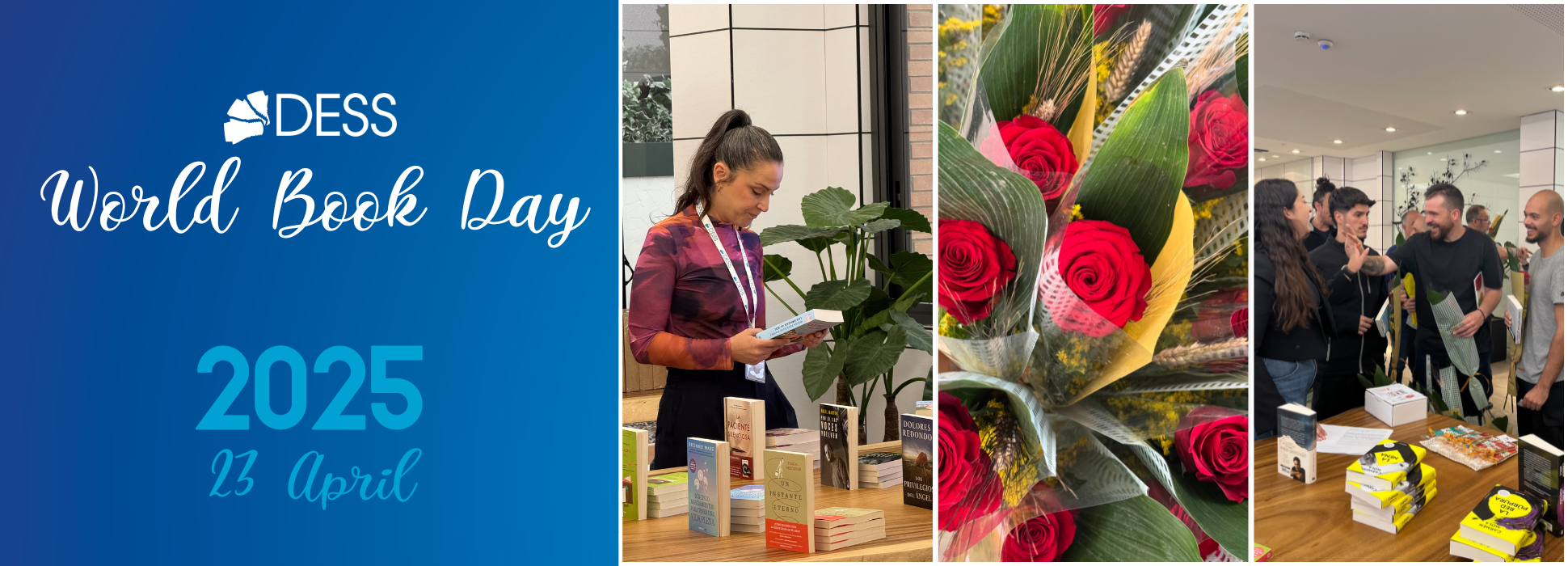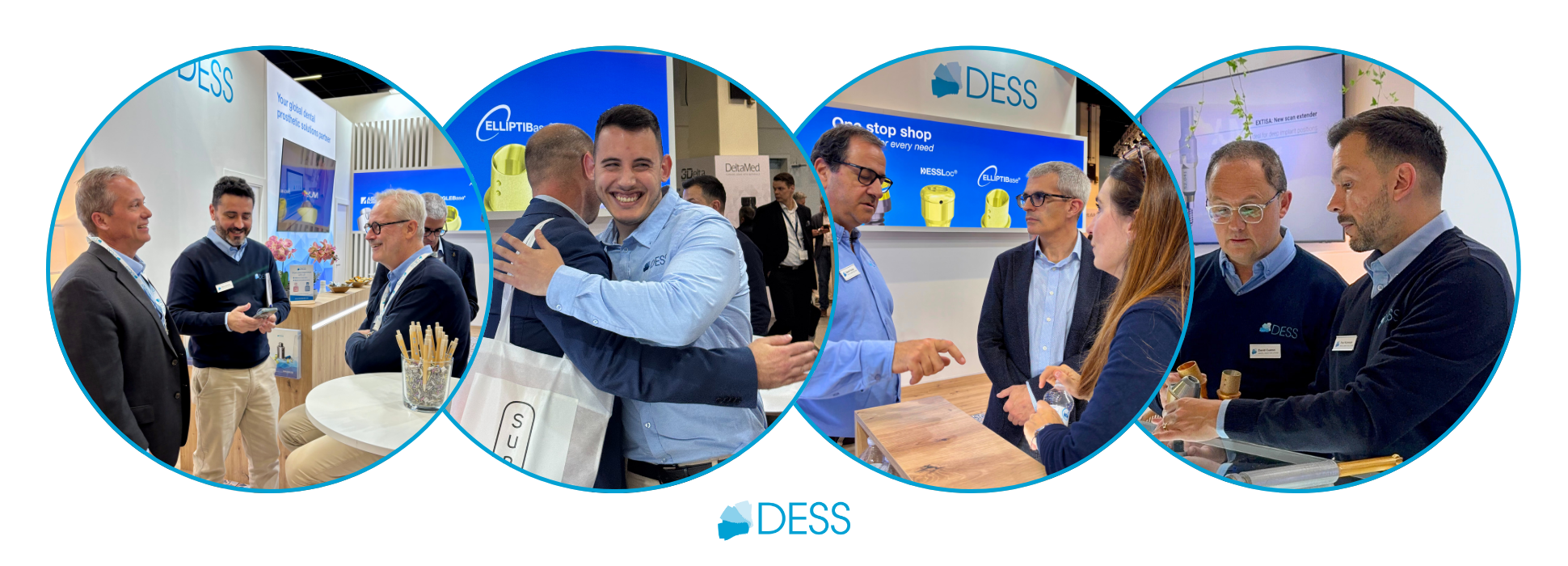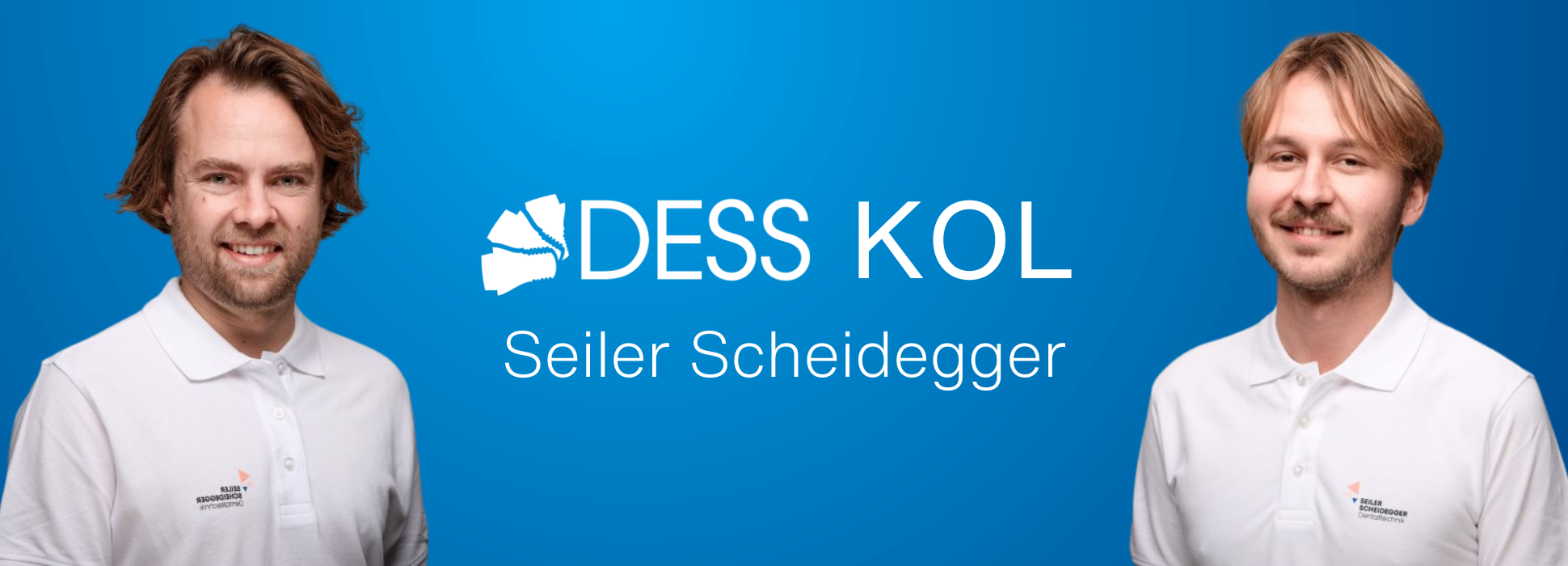Maximum Precision | The Benefits of Photogrammetry in Full Arch Implant Restorations
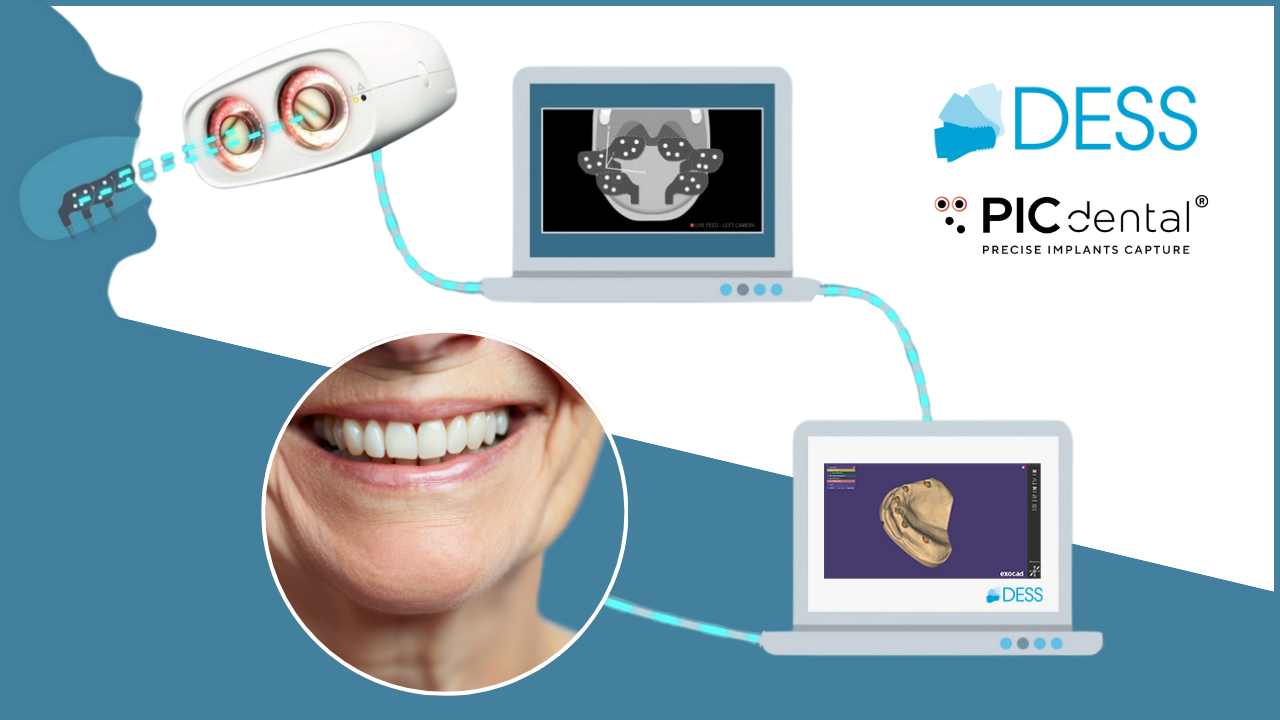
Recent advancements in digital technology have revolutionised the field of dentistry, significantly improving treatment results, reducing chairside time for patients and clinicians and enhancing patient’s comfort, satisfaction and overall quality of life.
Digital Advancements in Dentistry
In Implant Dentistry, digital workflows have introduced techniques that elevate the accuracy and efficiency of prosthetic results, especially in full-arch restorations, one of the most complex treatments in implantology. Innovations such as photogrammetry and 3D printing have remarkably increased the success of full-arch implant rehabilitations, setting new standards in the field.
Precision in Full-Arch Restorations
The importance of a passive-fit
In Full-Arch Implant Dentistry, achieving an accurate representation of the implant positions is crucial for the proper fit and long-term success of the prosthesis. Each step of the prosthetic process can introduce errors, potentially resulting in an ill-fitting prosthesis. The goal is to achieve a passive-fit prosthesis to minimise stress and strain on the supporting implants. Contrarily, an inadequate fit can lead to excessive oblique loads, imposing significant stress on the implants and their prosthetic connectors. While attaining complete passivity is impossible, the objective is to reduce the marginal gap as much as possible.
Revolutionising Implant Dentistry with Photogrammetry
Transformative Technology
Photogrammetry technology enables clinicians to digitally capture reliable and accurate representations of dental implant positions.
In essence, photogrammetry is the the art, science, and technology of obtaining reliable information about physical objects and the environment, through processes of recording, measuring, and interpreting imagery and digital representations of energy patterns derived from noncontact sensor systems.(1)
Application in Implant Dentistry
In the context of implant dentistry, photogrammetry is used to accurately capture interrelated implant positions and angulations in three dimensions. By applying mathematical relations to a series of two-dimensional images, a three-dimensional representation of multiple implant positions is created.(2)
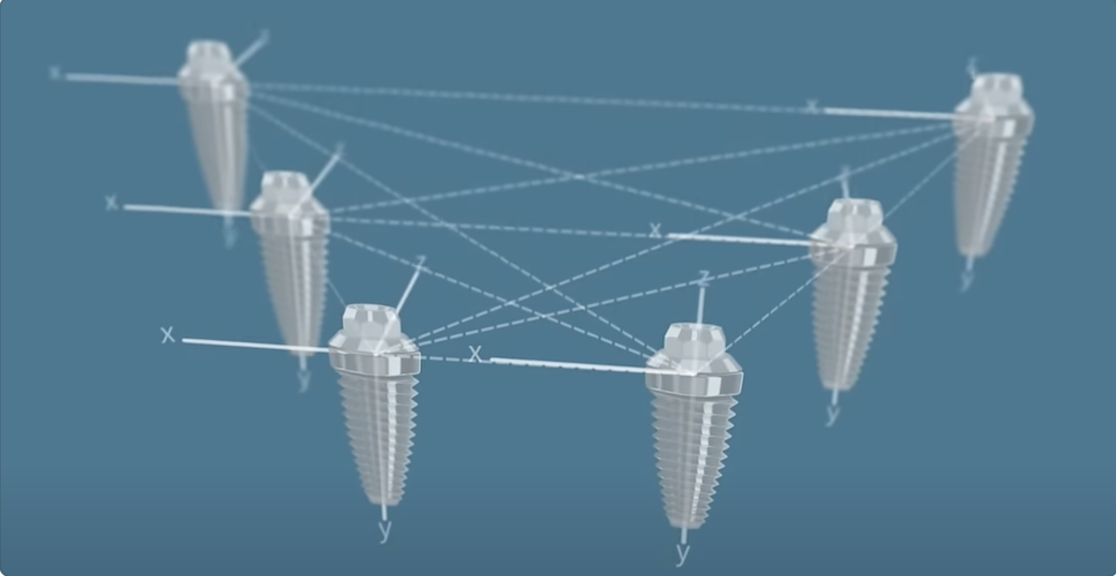
This system is revolutionising the workflow for dental implant procedures, providing accurate, efficient, and less invasive methods for both patients and practitioners. The use of these technologies can significantly reduce the time and costs associated with traditional dental implant procedures while improving the overall accuracy and outcomes of dental restorations.
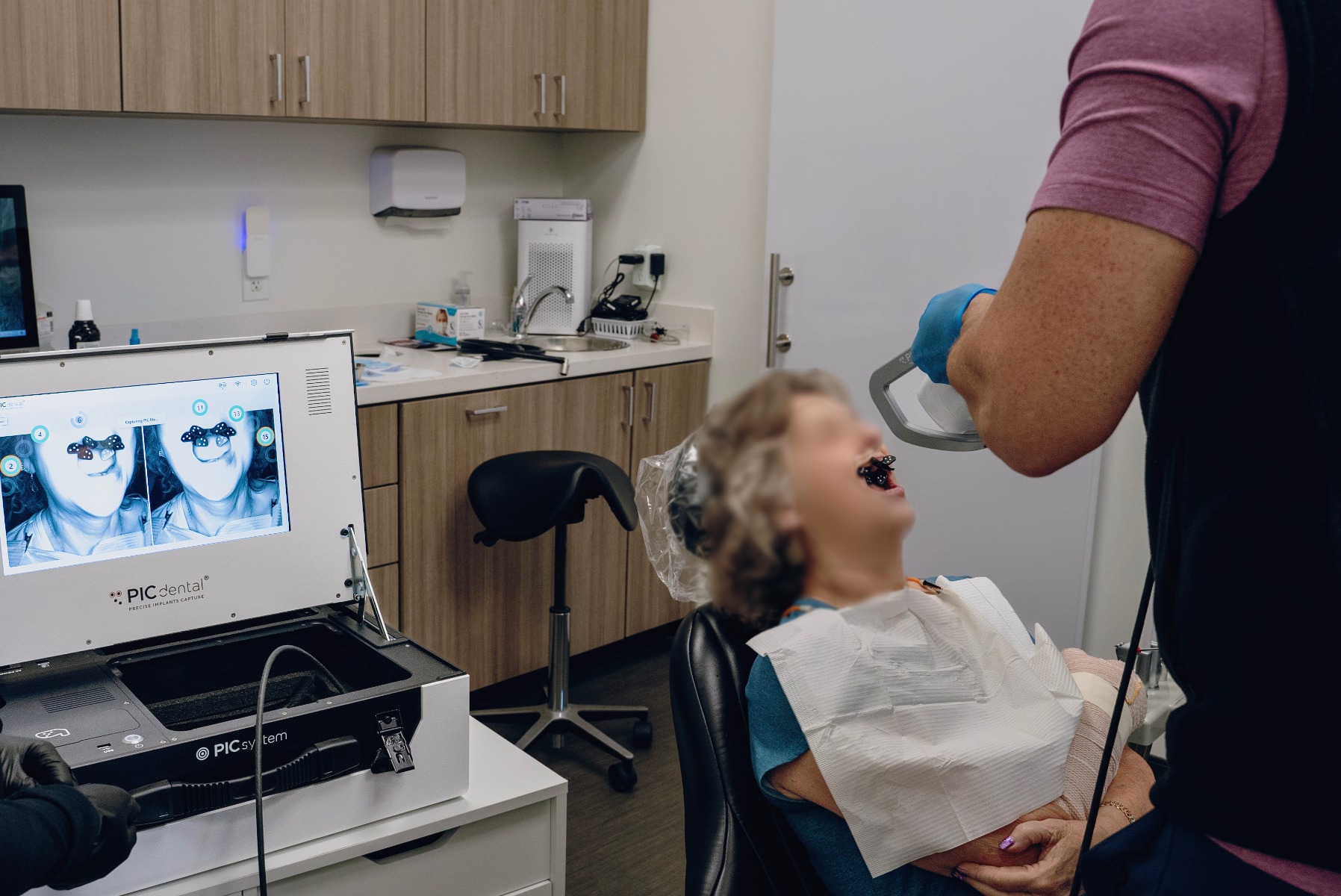
Photogrammetry vs Conventional Methods
Numerous studies show(3) that, in comparison to conventional impression methods such as intraoral scanning, photogrammetry is more efficient, less invasive, faster, and provides greater patient satisfaction when it comes to determining the implant positioning in a multiple implant restoration case.
The world’s first commercially available dental photogrammetry solution, the PIC system, was invented by PIC dental® and released in 2010. Today, there are several other photogrammetry systems in implant dentistry available on the market, such as iMetric iCam4D and MicronMapper.
Integration with Intraoral Scanning
Intraoral scanning still plays a crucial role in the overall full-arch restoration process, as dental photogrammetry is focused on measurements of implant positions and angulations.
PIC dental® created a new digital workflow to combine photogrammetry and intraoral scanning that provides a digital master model with both precise implant positions and soft tissue geometry, which became the de facto standard in the dental photogrammetry sector. Therefore, the success of the final full-arch rehabilitation is achieved by combining both photogrammetry and intraoral scanning techniques.
For this reason, DESS® and PIC dental® have joined forces in a collaboration to deliver the best possible outcomes in implant supported Full Arch restorations.
The Best Solution for Full Arch Implant restorations
Precision of the PIC System
Known for its evidence-based precision, the PIC system uses a stereo camera (PIC camera®) to capture detailed images that are converted to implant positions by its measuring algorithm. It boasts an accuracy of up to 4 microns under controlled conditions, making it the most precise dental photogrammetry system available. It is also the most scientifically and commercially validated solution in the industry with over 31 peer-reviewed in vitro and in vivo studies as well as over 1,000,000 successful clinical cases completed worldwide.
Digital Workflow Integration
With the pioneering PIC system to determine the exact positioning and angulation of the implants and DESS® Abutments to scan the in-mouth soft tissues and design the dental restoration in CAD software you will get a predictable passive fit in your full arch prostheses.
PIC dental® & DESS® streamlined Digital Workflow:
1. The PIC transfers (photogrammetry-coded abutments) are connected onto the patients implants, during or after surgery.

2. The PIC camera® captures images of the PIC transfers
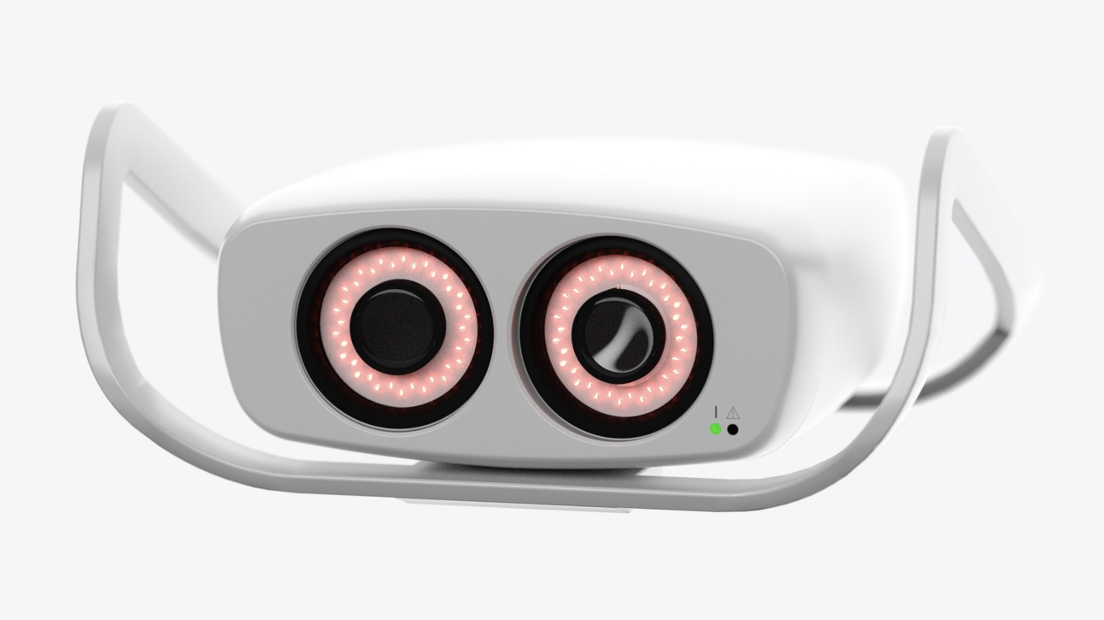
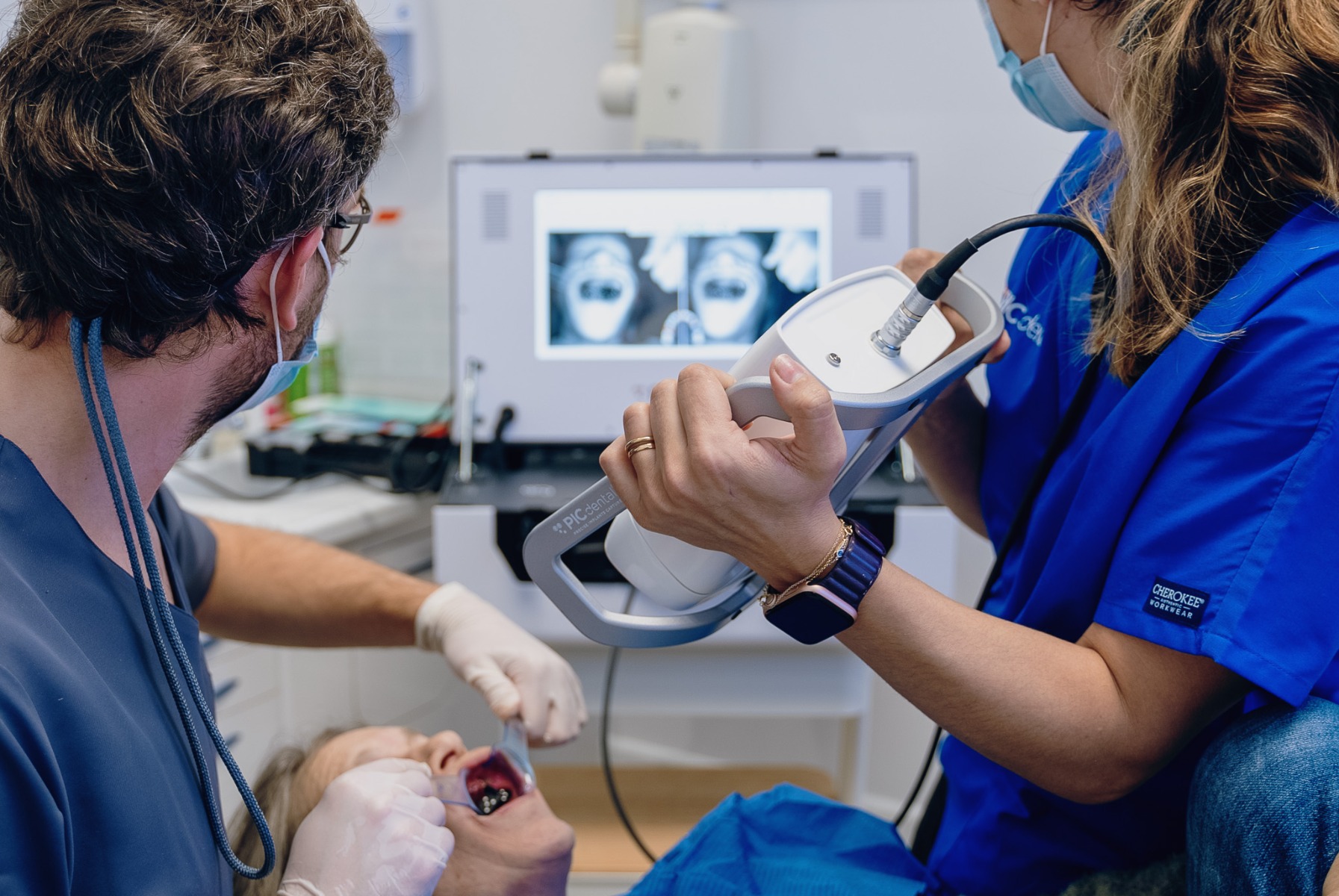
3. The images are sent to PIC suite, a software that performs measurements on the images to calculate the exact implant positions and angulations.
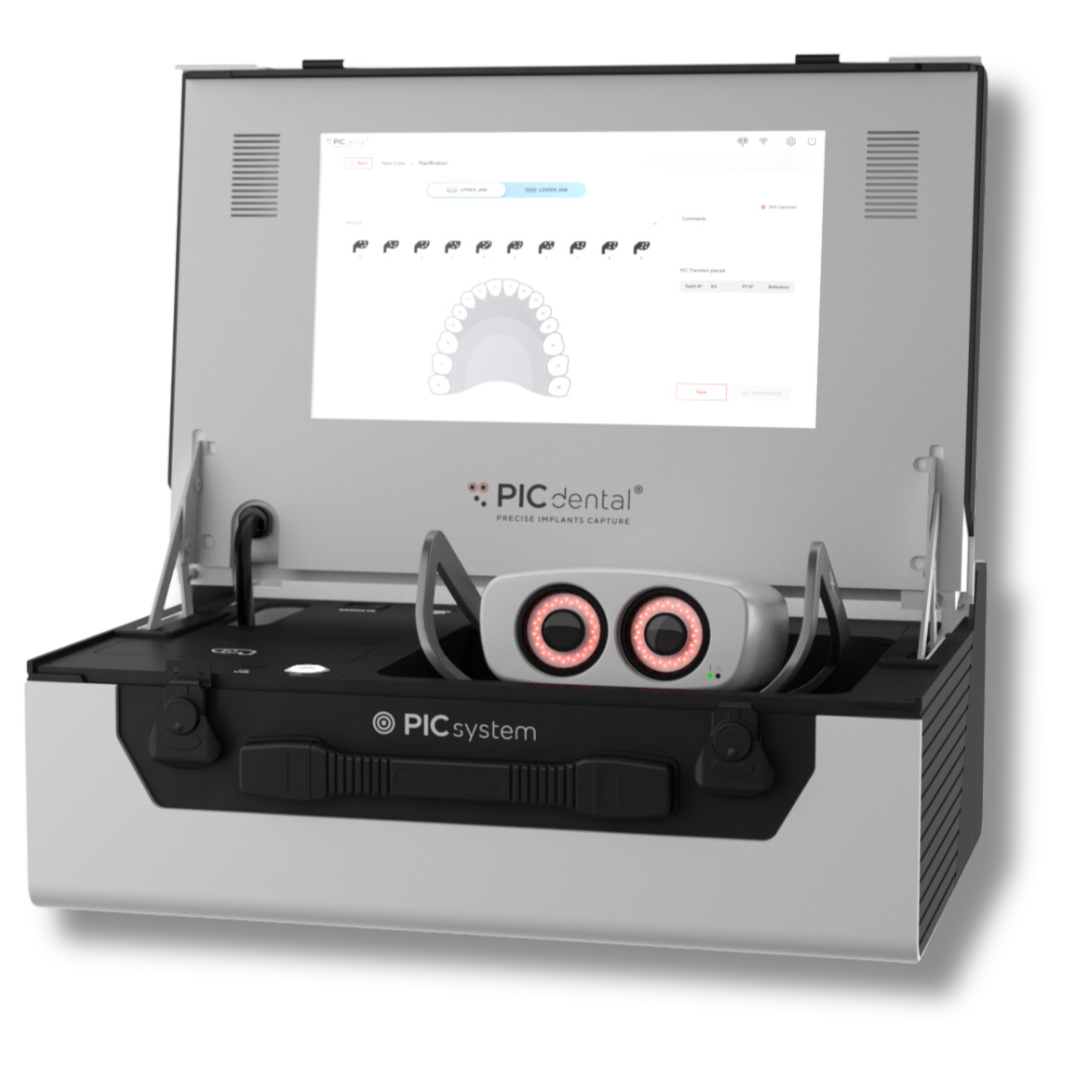
4. The PIC suite software exports the measurement as an STL file (the “PIC file”) where each implant position becomes the DESS® Abutment chosen for intraoral scanning in the next stage, which will allow the posterior merging of the two objects.

This STL file is then sent to a CAD software (exocad or 3Shape).

5. DESS® Intraoral Scanbody, Healing Abutments or MUA are screwed onto the patients implants and scanned with an intraoral scanner to get an accurate impression of the soft tissues of the mouth, such as the gingiva.
6. Both PIC and DESS® STL files are combined in the CAD software.
DESS® provides a wide range of options to enhance the outcome of your Full Arch restorations. These include the new Full Arch Screw for Multi-Unit, which offers a thicker structure seat thickness and the possibility to correct the screw channel up to 25o. This innovative solution is integrated into DESS® Libraries.

Refining CAD Design for Optimal Fit
The combination of the mandibular and soft tissue impressions taken with the intraoral scanner and the exact 3D representations of the implants position and angulation measured with the photogrammetry system, allow for professionals to create a very accurate and precise CAD design of the final prostheses with a guaranteed passive fit.
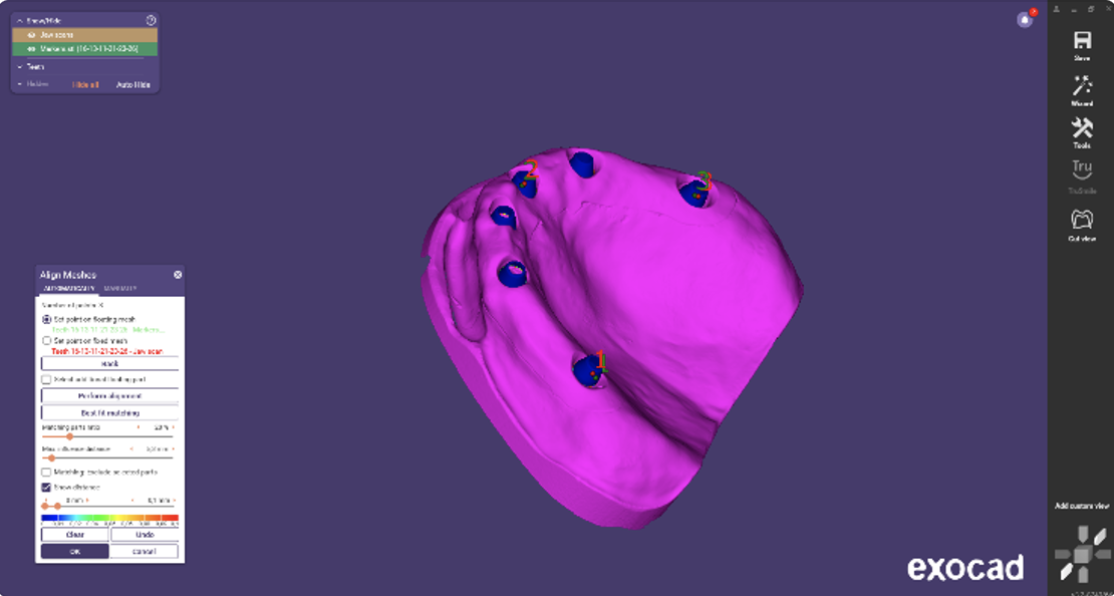
DESS® Libraries are compatible with PIC dental®, which makes it possible to work with both DESS® Abutments and PIC files in Exocad and 3shape. You can download them here.
Elevate Your Full-Arch Practice with DESS® and PIC dental®
Integrating DESS® and PIC dental® technologies into your Full-Arch practice will revolutionise your workflow and results. By leveraging the precision of the PIC system to capture the exact implant positions and angulations and utilising DESS® Abutments for soft tissue scanning and CAD design, you can achieve unparalleled accuracy in full-arch restorations. This unique collaboration offers top-quality abutments and advanced photogrammetry techniques, ensuring optimal final restorations and enhancing both patient satisfaction and clinical efficiency. Scale up your practice with this cutting-edge approach to implant-supported full-arch rehabilitations.
Looking to get started with photogrammetry? Begin your journey today with DESS® and PIC dental®!
(1)https://www.sciencedirect.com/topics/agricultural-and-biological-sciences/photogrammetry


